The Digital Construction Awards attracted more than 120 entries, 63 of which have been shortlisted. Here, we detail the shortlist for Digital Partnership category, sponsored by Bluebeam.
This category recognises the best use of digital technology to enhance a partnership between two or more organisations on a project, at any level of the supply chain. Six entries made the shortlist:
Bespoke fitted seating | Future Joinery Systems with South West Upholstery, 4D Routing, Sydenhams CNC
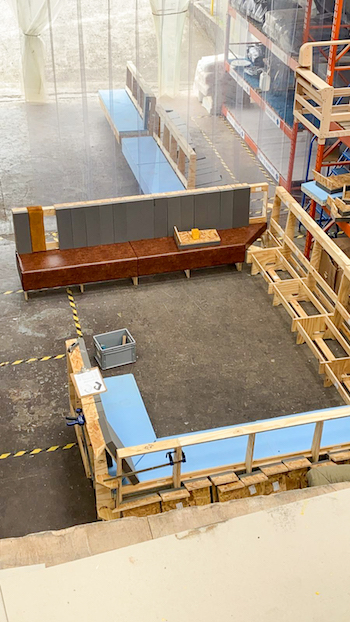
The collaboration between Future Joinery Systems (FJS) and manufacturer South West Upholstery was initiated by increased customer demand for bespoke fitted seating and a shortage in joinery capacity.
South West Upholstery recognised the potential that FJS’s CAD configuration tools could provide in terms of improved efficiency, access to digital fabrication, competitive pricing, more accurate quotations and shorter lead-in times.
FJS had to design a library of configurable models that could be used digitally to fabricate the framing parts. These could then be sent to a local CNC manufacturer and delivered to SWU as a kit of parts for easy assembly by their in-house team.
FJS’s CAD-to-manufacturing workflow is built around several innovations:
- an in-BIM/CAD configurator for designers, with cost information, linked to…
- a single model definition used for design and manufacture, which produces…
- standardised manufacturing output for a distributed manufacturing network, and
- a platform that links designers with makers, exchanging manufacturing information.
Dynamic costs are calculated as the design is configured, based on current material, fittings and machining costs. This provides the author with realistic cost expectations from the outset.
Clarice Pears Institute of Health & Wellbeing building at The University of Glasgow | Qualis Flow with Multiplex and Zero Waste Scotland
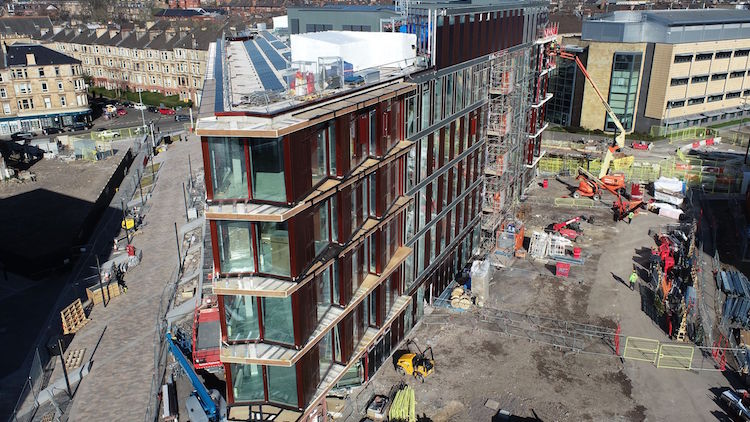
Zero Waste Scotland partnered with Multiplex on this University of Glasgow project, exploring whether AI could automate data collection processes, using the Qflow system.
Qflow is a suite of software tools that enable construction teams to track and manage waste and materials on a live construction site. Photos of delivery and waste notes are taken at the site gate, and uploaded within three clicks via a smartphone.
Qflow then uses machine learning models to extract the data from the photos, and present it within a customer-facing portal, and also via an API to integrate with reporting and business intelligence tools (such as Power BI). This enables visualisation of data and flags insights, such as compliance issues.
The Qflow system clearly demonstrated benefits for the project team, including reducing lead times by 98% for access to material delivery data for project stakeholders, and removing double-handling of data, which resulted in a more complete picture of material deliveries.
The system reduced data underreporting by approximately a third (in terms of embodied carbon), while removing the administration burden otherwise placed on supply chain partners (equivalent to a saving of £7,500 over a 12-month fit-out programme).
Goldeni’s IoT influencing the design and fit-out for commercial offices | Morgan Sindall with Goldeni and Microsoft
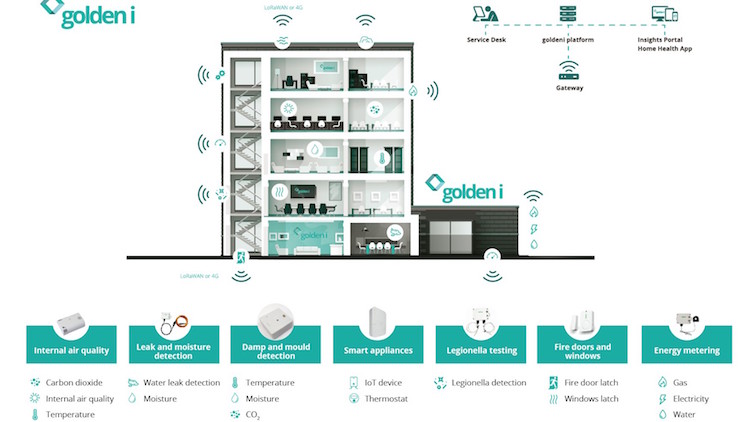
Morgan Sindall has engaged with Goldeni to collect and use data on end-user behaviour to improve office fit-out designs.
Via IoT sensors, the Goldeni platform can gather a wide variety of data, and then pinpoint which insights would be of most use to fit-out design teams.
Goldeni and Morgan Sindall have deployed the IoT technology in an office in Bracknell to collect data before, during and after a refit process.
Following the completion of the refit, the data will be interrogated again to assess the effectiveness of the new design and its suitability for future projects. Examples include analysing the way the existing meeting rooms are used, if there are enough of them, and if they are too large or too small.
The temperature and CO2 levels within the office can also be compared pre- and post-refit to ensure that the internal air quality remains within a healthy range and that any hot or cold spots have been eliminated. Reviewing the energy usage data following the construction work will also highlight the benefits of positive operational changes.
The Digital Cube | Digital Construction Technologies with Collen Construction
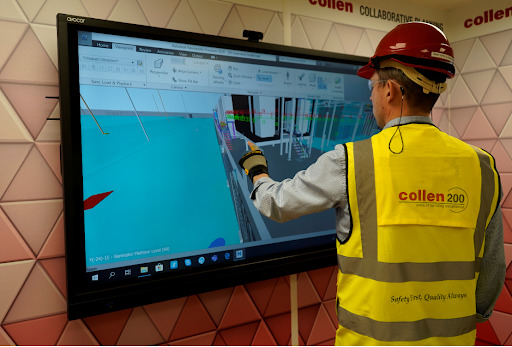
The senior management teams of BIM consultancy Digital Construction Technologies (DCT) and main contractor Collen Construction recognised that in working together they were not extracting the maximum benefit from digital tools. Office-based engineers excelled in digital tools while site-based staff were not only unable to use some technology, but were losing out on digital skills.
So DCT and Collen set about creating the Digital Cube, an onsite ‘BIM cave’.
It is described as “an office environment with the latest touch activation systems by Avitor networked back to the cloud. The cube enables both site team and office team to overcome the challenge of collaboration and work cohesively at the coal face where they are most effective, with real-time digital information and coordination platforms.”
Software available in the Cube includes Navisworks, Bluebeam and Nureva Span Wall.
On the data centre project on which the Cube was tested, a cumulative saving of 3,000 people hours was estimated over the 18-month construction period, thanks to the immediate onsite availability of the Cube’s digital tools.
The Forge | Landsec, Sir Robert McAlpine, Mace and Bryden Wood
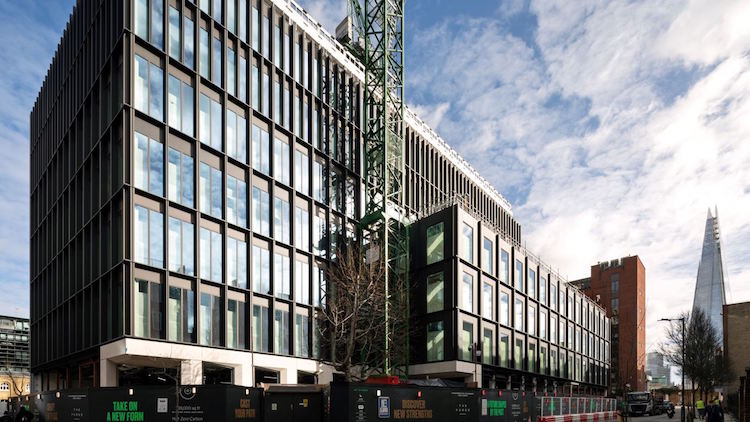
Collaboration via digital technology underpinned the platform DfMA (design for manufacture and assembly) approach on this £95m, 139,000 sq ft office development in Southwark, London.
As client Landsec’s appointed manufacturing and assembly manager team, main contractors Sir Robert McAlpine and Mace collaborated with architect Bryden Wood to deploy a huge range of digital tools on The Forge.
These included: Disperse 360 photo capture and automated progress-reporting; Qflow monitoring of waste and deliveries; iFire, a fire-stopping monitoring tool; and robotic welding machines linked to BIM models to create temporary works kit.
Converge concrete strength monitoring, using live data from wireless sensors monitored by AI, meant reduced strike times.
Overall, the digital innovations and manufacturing approach meant construction delivery required 20% fewer site operatives than for a traditional project.
The finished project achieved a 25% reduction in embodied carbon compared to the ‘business as usual’ design.
University of Glasgow ARC Research Hub | Multivista with Multiplex
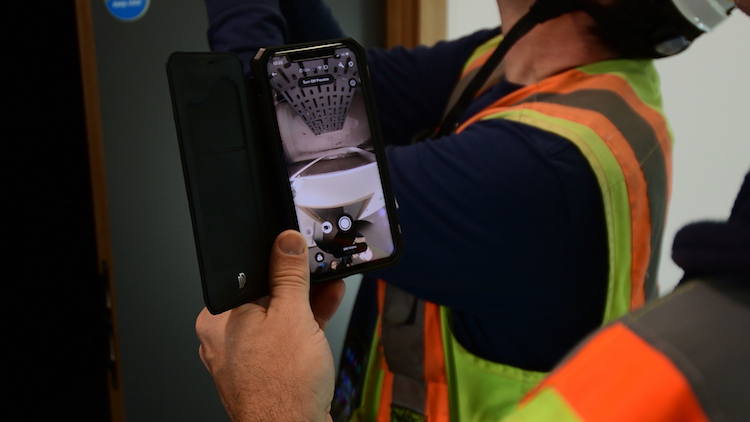
On this University of Glasgow project, Multiplex collaborated with documentation specialist Multivista to create an assessment workflow that includes a detailed photographic record of fire-rated walls, and an AI image recognition system that detects firestopping anomalies with +95% accuracy.
Developed using Multivista’s database of hundreds of thousands of firestop anomaly photos, the automated firestop assessment employs several AI techniques to improve unsealed firestop detection accuracy and streamline firestop change detection and tracking. This assessment has been incorporated into Multivista’s existing documentation services to generate task lists of potential problem areas for easier review and more efficient communication and remediation.
The automated firestopping assessment provides all stakeholders with an accurate record of firestopping at handover, eliminating the uncertainty and risk of reworks and potential danger above the fire walls.
Multivista’s assessment reduces contractor rework by more than 25% while increasing the detection accuracy of firestop deficiencies by 40%.
Celebrate with the best
The winners of the Digital Partnership category, alongside the victors of the other 11 categories, will be revealed at the awards dinner on 12 July at the Brewery in London.
You can join them by booking your places at the awards. There is an early bird discount of 20% for those who book tables before 5pm on 20 May.
The Digital Construction Awards celebrate best practice and reward innovation in the application of BIM and digital technology in the built environment sector.
The awards are run by Digital Construction Week, the Chartered Institute of Building, and media titles Construction Management and BIMplus.
Awards sponsors include Revizto, Bluebeam, Procore, Autodesk, Solibri and the Association for Project Safety.
Don’t miss out on BIM and digital construction news: sign up to receive the BIMplus newsletter.















